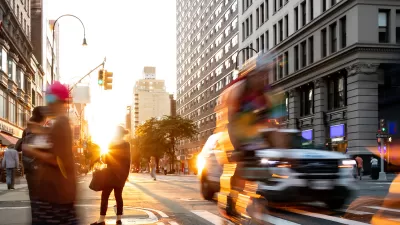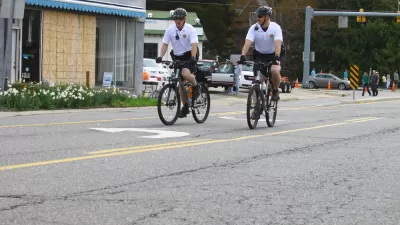The Organization for Economic Cooperation and Development reveals why Americans don't use the healthiest, cleanest form of transportation. Hint: it has to do with the frequent injuries we're trying to avoid.
The OECD finds that bicyclists in the U.S. incur a higher rate of fatalities and injuries in the U.S. compared to counterparts that are working to promote bicycling. Some of the other reasons that keep Americans from biking will shock you, as Matt Phillips writes:
- Just 54% of bicyclist fatalities were considered by investigating officers to have a contributory factor on the part of motorists involved
- "The majority of fatal bike crashes occur in dry or clear conditions (94% in the US and 87% in the UK)"
- And, possibly saddest of all: “Data from the United States indicate that cyclists were imputed with an improper action in 68% of fatal bicycle crashes (though, as noted earlier, this may be biased as the cyclist was not able to give their version of events)."
FULL STORY: 11 Reasons Why Bicycling in the U.S. is Exceptionally Dangerous

Planetizen Federal Action Tracker
A weekly monitor of how Trump’s orders and actions are impacting planners and planning in America.

Maui's Vacation Rental Debate Turns Ugly
Verbal attacks, misinformation campaigns and fistfights plague a high-stakes debate to convert thousands of vacation rentals into long-term housing.

San Francisco Suspends Traffic Calming Amidst Record Deaths
Citing “a challenging fiscal landscape,” the city will cease the program on the heels of 42 traffic deaths, including 24 pedestrians.

Amtrak Rolls Out New Orleans to Alabama “Mardi Gras” Train
The new service will operate morning and evening departures between Mobile and New Orleans.

The Subversive Car-Free Guide to Trump's Great American Road Trip
Car-free ways to access Chicagoland’s best tourist attractions.

San Antonio and Austin are Fusing Into one Massive Megaregion
The region spanning the two central Texas cities is growing fast, posing challenges for local infrastructure and water supplies.
Urban Design for Planners 1: Software Tools
This six-course series explores essential urban design concepts using open source software and equips planners with the tools they need to participate fully in the urban design process.
Planning for Universal Design
Learn the tools for implementing Universal Design in planning regulations.
Heyer Gruel & Associates PA
JM Goldson LLC
Custer County Colorado
City of Camden Redevelopment Agency
City of Astoria
Transportation Research & Education Center (TREC) at Portland State University
Jefferson Parish Government
Camden Redevelopment Agency
City of Claremont





























